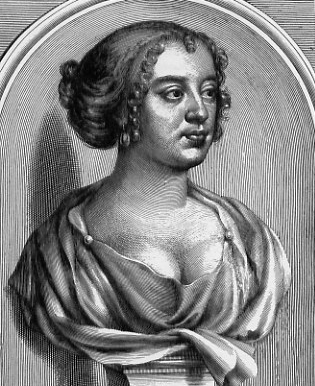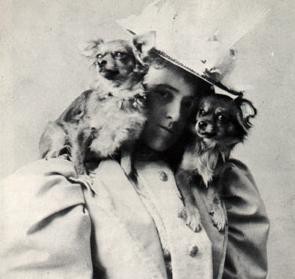The Truly Best-Dressed Characters in Literature
by Jane Hu

Recently our neighbors at Flavorwire picked their ten best-dressed characters from literature. It’s fascinating, if slightly heavy on film adaptions. (“Isabelle Huppert in Claude Chabrol’s Madame Bovary (1991).” No, that would be Gustave Flaubert’s Madame Bovary (1856)!) Isn’t the best part of novels their ability to evoke striking images in the mind alone? Let’s see if we can help!
The author of that list makes a useful confession in the comments section: “Sebastian Flyte totally would have made the list if the text of Brideshead were available online.” Of course. Alas, it is difficult to work with an incomplete library. Especially when it concerns fashion-an obvious matter of personal taste and moral proclivities. (A professor of mine said: “Brett Ashley? Really? Or Scarlett O’Hara? She makes a virtue out of curtains, rather like the von Trapp children.”)
Here are some more suggestions from texts that, for the most part, can be found online:
• Pyrocles in Sir Philip Sidney’s Arcadia (written around 1580) quite appropriately navigates toward the aesthetically pleasing and falls in love with a portrait of Philoclea. He cross-dresses as a gorgeous Amazon and everyone, both male and female, falls in love with him. Sidney devotes long passages to describing doublets of “sky colour satin, covered with plates of gold” and “crimson velvet buskins, in some places open (as the ancient manner was) to shew the fairness of the skin.”
• Who can forget Chaucer’s Wife of Bath from the Canterbury Tales (written around 1400):
Her kerchiefs were of finest weave and ground;
I dare swear that they weighed a full ten pound
Which, of a Sunday, she wore on her head.
Her hose were of the choicest scarlet red,
Close gartered, and her shoes were soft and new.
• Spenser’s Duessa from The Faerie Queene (1590) is “adornd with gold and jewels shining cleare” and “in garmets gilt, / And gorgeous gold arrayd.” The personification of Falsehood, Duessa quite appropriately finds herself covered with shimmering jewels.
• As long as we’re looking at visual interpretations of words, what about Shakespeare (1564–1616)? His characters were written to be seen. Hamlet didn’t just give melancholy a new emotional low, his customary suit of “solemne blacke” has been faithfully donned by sad young men ever since. Forget artistic redeployments of Ophelia, what about her monologue that depicts Hamlet in all his perfect misery:
Lord Hamlet with his double all unbrac’d
No hat upon his head, his stockings foul’d
Ungartred, and downe giued to his Anckle
Pale as his shirt.”
Malvolio fantasizes about lying on a daybed, wearing a “branched velvet gown” and his fetishistic desires culminate as he continually insists “my lady… did commend my yellow stockings of late, she did praise my leg being cross-gartered.” Further, if clothes are a manifestation of a character, Petruchio’s wedding outfit of “a pair of old breeches thrice turned, a pair / of boots that have been candle-cases” is a prime example.
• Less is more in Robert Herrick’s short and seductive Upon Julia’s Clothes: “Whenas in silks my Julia goes, / Then, then, methinks, how sweetly flows / That liquefaction of her clothes.” Indeed, if simplicity is a virtue, then the prize goes to John Milton’s Adam in Paradise Lost 1667), who is “Accompani’d then with his own compleat/ Perfections, in himself was all his state.”
• May we jump several centuries? Even when in a rush, Maria Wyeth from Joan Didion’s Play It As It Lays (1970) is stunningly on key (even if the rest of her life is out of whack):
She dressed every morning with a greater sense of purpose than she had felt in some time, a cotton skirt, a jersey, sandals she could kick off when she wanted the touch of the accelerator, and she dressed very fast, running a brush through her hair once or twice and tying it back with a ribbon, for it was essential (to pause was to throw herself into unspeakable peril) that she be on the freeway by ten o’clock.
• Alternately, some sartorial descriptions demand to be milked. Gabriel GarcÃa Márquez’s lush One Hundred Years of Solitude (1969) displays the beautiful Fernanda del Carpio, whose bridal trunk is “so well organized that the schoolgirl knew by heart which were the suits and cloth slippers she would wear crossing the Atlantic and the blue cloth coat with copper buttons and the cordovan shoes she would wear when she landed.” During the scene of her husband’s death, he vividly describes Fernanda “wearing a pink silk dress with a corsage of artificial pansies pinned to her left shoulder, her cordovan shoes, with buckles and low heels, and sateen stockings held up at the thighs with elastic garters.” Please, let’s never translate this into film.
• Of course, it makes sense that the era of naturalism would produce novels concerned with detailing clothing. Jean Des Esseintes from Joris Karl Huysans’s À rebours (1884) is the archetypal aesthete and dandy. (Oscar Wilde modeled Dorian Gray from him.) Hester Prynne in Nathaniel Hawthorne’s Scarlet Letter (1850) expresses her erotic and aesthetic desires both through the clothes she makes and wears. Prynne’s sewing of her red “A” acts as a symbolic resistance to the ruling social elite. Charles Drolet-Sister Carrie’s first boyfriend from Theodore Dreiser’s 1900 novel-might be considered the first metrosexual in literature. Absolutely mad about clothes, he introduces Carrie to the dizzying world of shopping.
• The athletically built Queequeg from Herman Melville’s Moby Dick (1851) is known and revered most as a character who externalizes himself through his full-body tattoos. His clothes are assembled from a mixture of global cultures and thus Queequeg epitomizes the dandy as a cosmopolitan worker of the world. Also, who can forget the image of Queequea smoking from his tomahawk?

• As much as I adore Edith Wharton and her novels that stage unspoken narratives through characters’ clothing choices, perhaps Lily Bart, May Welland, and Ellen Olenska should not get all the attention. What about Undine Spragg from The Custom of the Country (1913)? She is surrounded by people who are “all crazy to dress” her — and she welcomes them with open arms. Like most of Wharton’s female characters, Undine cunningly conducts her social transactions through necklaces and dresses. For walks around the public park, she “put[s] on her most effective dress.”
• One must also give a shout out to Henry James’s Daisy Miller and Isabel Archer and Bram Stoker’s Dracula, who are all, if anything, immaculate. Daisy Miller: A Study does take its sweet time to inspect Daisy — the word “pretty” is employed 43 times in this short novella. But that can’t be helped in a world where “white muslin, with a hundred frills and flounces, and knots of pale-colored ribbon” does not mean excess, but perfection. The 19th c. list goes on and on (Walter Elliot from Jane Austen’s Persuasion (1818), Rosamond Vincy from George Eliot’s Middlemarch (1869)) that it ultimately must come down to a matter of personal taste.
* * *
If one’s simply looking for books concerned with how fashion articulates desire, Wharton would certainly be a good place to start. And let’s face it, who really can authoritatively define “best dressed”? Perhaps we are more likely to remember the eye-catching over the stylish. Some novels of interest might be Colin MacInnes’ Absolute Beginners (1958)Â with its overdressed mod fashions of late 1950s London or Peter Carey’s Jack Maggs (1997), filled with outlandish and foppish costumes. A personal favorite is D.H. Lawrence’s Women in Love (1950), with its cast of characters who wear “clothes in pure defiance.” Ursula and Gudrun’s bright, bohemian clothes, Oprah’s “beautiful oriental clothes,” and Gerard’s “blue silk wrap” are all delightfully sensuous.
Unfortunately, the list does grow rather Eurocentric. Characters in Sam Selvon’s The Lonely Londoners (1956) do not possess the luxury to dress in “pure defiance.” As immigrants rejected by London society, they try to impress — and so blend in — through their clothing choices. Eye-catching in the wrong way, they employ style as a means to fashion a new identity.
For another look at identity and clothing, Yinka Shonibare’s Diary of a Victorian Dandyuses not literature, but visual art, to respond to Dorian Gray-esque figures. Shonibare’s work exposes the relation between styles of dress, class and imperial domination. Using so-called “African fabrics” (bought and made in Europe), he reimagines famous 18th c. paintings to expose the artificiality behind one’s concept of both Africa and British Victorianism. Maybe someone will make a movie out of it.
